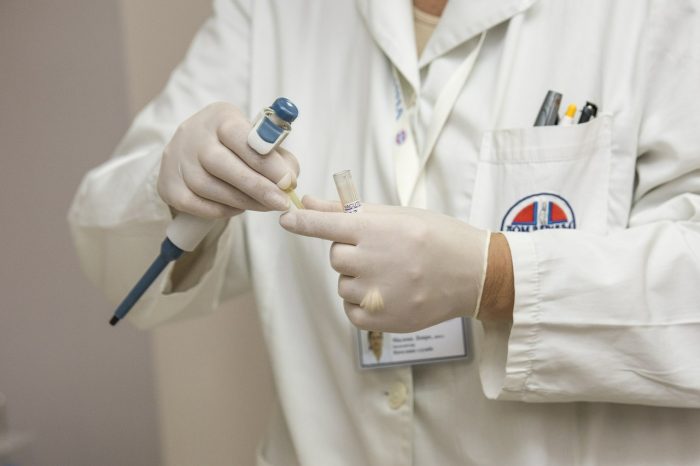
A recent study has examined the results of California’s decision to ban personal belief exemptions for vaccinations. According to the study, the rate of unvaccinated children dropped from 9.8% in 2013 to just 4.87% in 2017, a decrease of approximately half.
The study was conducted by Emory University, and it examined the effects of California’s recent decision to ban personal belief exemptions for children attending public schools. California is one of five states that don’t offer a personal (philosophical/religious) exemption from vaccinations required for children to attend schools. Aside from California, the states of West Virginia, New York, Mississippi, and Maine have also instituted legislation disallowing personal exemptions for vaccines.
Reducing The Number Of Unvaccinated Children
The goal of the personal exemption bans instituted in California and the four other states is to reduce the number of children going without vaccines. These four states only allow medical exemptions from vaccinations.
However, until now it was still unclear what impact these laws would have on children within the states. Data from California implies that banning personal belief exemptions for vaccinations genuinely increases the number of children who receive the proper vaccines. The study was conducted by Cassandra Pingali and others. As reported by CNN, Pingali is currently a researcher at the US Centers for Disease Control and Prevention’s Immunization Services Division in Atlanta.
Pingali and the other researchers examined the vaccination statuses of kindergartners in the years between 2000 to 2017. During these 18 years, three different campaigns aimed to improve the rate of childhood vaccination. An educational campaign was implemented, and in addition there were two vaccine-related public policies implemented.

Photo:
(https://pixabay.com/photos/kids-children-row-fun-young-71716/) PublicDomainPictures via Pixabay, Pixabay License (https://pixabay.com/service/license/)
The researchers found that unvaccinated children, those who entered kindergarten without having received all the recommended vaccines, was approximately 7.8% in the year 2000. The number of unvaccinated children would rise over the course of the next decade to a peak of 9.84% in 2013. However, by 2017 the rate of unvaccinated children was only 4.87%. So what happened in then years between 2013 to 2017?
At the start of 2014, California allowed personal exemptions to vaccinations. However, that year a bill passed which required patients to speak to a qualified healthcare practitioner regarding the risks involved with not vaccinating their child, before they could receive a personal belief exemption. The following year, in 2015, both state and local health departments across California began a campaign intended to educate public school staff on the various admissions criteria for personal exemptions. In 2016, the state of California pushed forward a bill banning personal belief exemptions outright. The bill was likely spurred on by a measles outbreak that hit Disneyland during the course of that year.
According to Pingali, the effect of the ban was a substantial decrease in the number of children entering kindergarten unvaccinated.
“We noted a big decrease in the likelihood that a not-up-to-date kindergartener would have contact with another not-up-to-date kindergartner within their school,” explained Pingali to CNN. ”These results indicate that a vaccine preventable disease outbreak is less likely to occur, and the interventions were effective at increasing vaccination rates in California kindergartners.”
Between the years 2000 and 2017, approximately 9.3 million children began kindergarten at over 10,000 schools across the state of California. It is from this massive data set, collected by the California Department of Public Health, that the study drew its conclusions from. Despite the amount of data available to the researchers, the study did have some limitations.
For one thing, only schools with a student body greater than 10 students were included in the database, and the analysis only covered children entering kindergarten between the years 2000 to 2017. It isn’t clear how the law has affected children over the past couple years, and obviously, the results are limited to the state of California. Two of the authors on the study also disclosed financial ties to Pfizer or other companies.
A Changing Legal Landscape
Despite these limitations, Pingali and other public health experts believe that the results demonstrate how legislative activity can benefit public health. Dr. Peter Hotez, Dean of the National School of Tropical Medicine at Houston’s Baylor Medicine College, finds the results of the study compelling, according to CNN. Hotez notes that while the study does suggest legislation can meaningfully reduce rates of unvaccinated individuals, it would be good to examine how the vaccination rates change beyond 2017. Hotez explains that while there was a substantial, and immediate, impact on numbers of unvaccinated children, it is important to know whether or not the effects are sustainable, particularly as other states may begin tightening personal exemptions to combat the resurrection of measles.

Photo: (https://pixabay.com/photos/capital-building-sacramento-273344/) via Pixabay, Pixabay License (https://pixabay.com/service/license/)
Currently, 45 states and the District of Columbia have some provision that allows people to avoid getting a vaccination for nonmedical reasons. However, the status quo seems to be rapidly changing. The changes in legislation are being pushed by the worst outbreak of measles for almost half a century.
The Centers for Disease Control and Prevention has reported almost 1100 cases of measles across 28 states in just the first six months of 2019. The outbreak rate is approximately three times higher than the outbreak rate for 2018, according to The Hill, and it is driven by large outbreaks occurring in large religious groups throughout the state of New York and suburban populations throughout Michigan and Washington. In response to the severity of the measles outbreaks, legislators in 26 different states are advancing bills intended to reduce or eliminate vaccine exemptions for religious or personal reasons.
Fighting Vaccine Misinformation
Even as legislators consider regulations to stem outbreaks of diseases like measles, scientists and physicians working on other ways to improve vaccination rates.
Vaccines are the most effective when a certain percentage of the population is vaccinated, protected against the disease. This threshold is referred to as herd immunity, and it represents the point at which enough individuals are immunized against the disease that the virus cannot take hold within the population, and it begins to die out.
Not everyone can be vaccinated. Individuals with compromised immune systems resulting from genetic autoimmune deficiencies or cancer have legitimate medical reasons for not being vaccinated. However, as these people cannot receive vaccines, they are especially at risk when encountering somebody who has chosen to forego a vaccination for personal reasons.
For this reason, physicians have been adjusting their tactics to try and convince the vaccine-hesitant to get themselves and their children vaccines.

(https://pixabay.com/photos/medic-hospital-laboratory-medical-563425/) , DarkoStojanovic via Pixabay, PIxabay License (https://pixabay.com/service/license/)
As reported by Medical Economics, one strategy is to simply treat the vaccinations as a norm, by making a statement that assumes the patients will receive their vaccinations. People are very influenced by societal norms, and the more normal something is perceived, the more likely people are to do it. For this reason, framing vaccinations as a routine procedure and simply making a statement that presumes the patient will be vaccinated can influence people to get vaccinated/get their children vaccinated while still preserving their choice. While this approach will not convince diehard anti-vaccine proponents, many people who are on the fence will respond positively to this strategy.
If presumptive approaches do not work, physicians can try a technique called motivational interviewing. Motivational interviewing is intended to drill down to the motivating reason a person is hesitant to get vaccinated, and once this reason has been illuminated, permission to give the patient facts about vaccines is requested.
Questions like “What concerns might you have about vaccinations?” can be asked, and if the patient is forthcoming and shares why they are hesitant to vaccinate themselves or their child, permission to share vaccine facts should be requested.
Asking for permission to share information about vaccines, rather than simply lecturing the patient about them, may make people more receptive to the information. According to the results of randomized controlled trials, published in the journal JAMA Pediatrics in 2018, motivational interviewing proved fairly effective at convincing parents to get their teenagers the HPV vaccination. After motivational interviewing techniques were implemented, the percentage of parents who resisted getting their teens the HPV vaccine decreased by approximately 9.5%.
According to Dr. Sean O’Leary, from the University of Colorado Anschutz Medical Campus, physicians should be careful trying to debunk myths surrounding vaccines. O’Leary is an associate professor of Pediatrics and Infectious Diseases, and O’Leary stated that providing the patient with information about vaccines without any context or explanation can occasionally backfire and make the misinformation more powerful. Instead, physicians are encouraged to clearly state that the myth is indeed of myth, and provide an alternative explanation for the phenomenon in question.
As an example, when addressing the myth that autism is linked to the MMR vaccine, physicians should clearly state that this notion is a myth and provide evidence to support this assertion, such as the fact that monitoring and diagnosis of autism has improved in recent years and the fact that autism has been linked to several different genes. It is also suggested that physicians establish their credibility by centering the discussion on the disease itself rather than the vaccine, as this helps establish the credibility of the physician.









